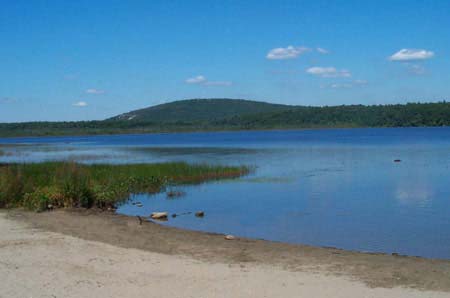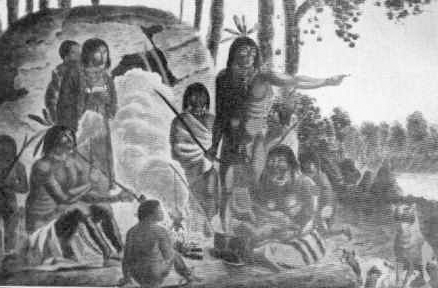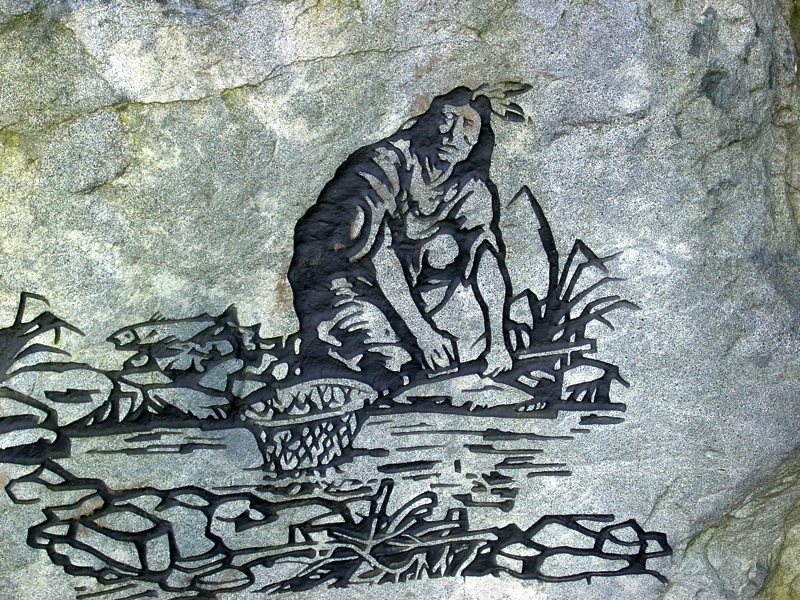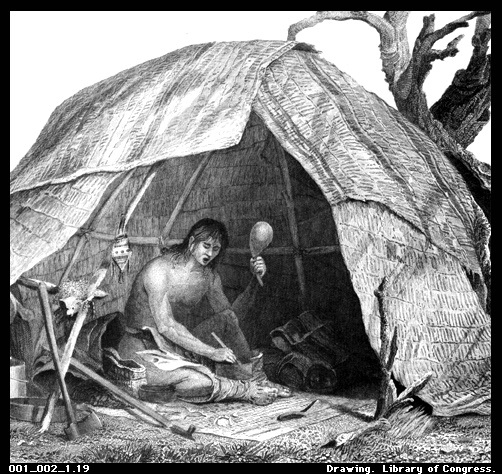A Lost Language, Culture and Heritage, Place Names in the Wilderness

We have become accustomed to relating our New England town names to their Old England ‘mother towns.’ We should not forget the presence of many Native American places as recorded in Algonquian, the ‘Indian’ language developed into written form by John Eliot and other English colonists. These‘place names’, along with small pockets of native villages and traditions, are some of the remaining vestiges of the ‘first nation’s wilderness’ which greeted the colonists in the New World.

For instance, the peoples of the present Commonwealth live in that ‘place of the big hill,’ Massachusetts. Massa, great or big; chu, hill; ett, place. Mas-sa-CHU-sett, the name the Indian tribes living around the ‘great blue hill’ (GBH) gave themselves. Wa-CHU-sett was the little hill place. The other Eastern Tribes of the ‘Algonquian Indian Nation’ were the Wampanoag, the coastal or Eastern people, the Narragansett, at a small narrow point, the Pequot, the grey foxes or the destroyers, and the Pawtucket, at the place of the little falls. At the furthest point East were the Wa-ban-A-ki, the people of the dawn, who have ‘no word for time.’ Everything exists in NEE-geh HA’a-mee, here and now, in the moment.

One early English emigrant who lived daily among the natives and learned their language was Roger Williams, who later compiled “A Key to the Language of America” (1643), after his banishment to Rhode Island. In his first fourteen weeks there, trading with and befriending the natives, Williams writes of his need “to learn their language [in order] not to be troubled by the company of the English.” Others who also had frequent contact with the natives were Thomas and Experience Mayhew among the island Indians, John Cotton (Jr) at Plymouth and John Eliot of Roxbury, the ‘Apostle to the Indians.’

A brief listing of extant Indian towns would include AM-os-keag, the place of fish traps; AG-a-wam, the lowland along the water; A-CUSH-net, at the place where we get to the other side; Co-HAS-set, the long stone place; and WA-ban, the wind. ‘Waban’ was also the name of John Eliot’s first convert, an Indian Chief. NIP-mucks were fresh water people of Vermont and New Hampshire, where the MER-ri-mac rapids came to NA-shu-a, where the river divides. TheA-QUIN-nah lived at Gay Head on Martha’s Vineyard.
The English colonizers were known as CHAU-qua-quock, sword men, or WAU-ta-CO-ne, a person wearing clothing, the white man. WAU-ta-CO-na-oug were coat men. WAU-ta-CO-ne-ME-se were English youth. WAU-ta-CO-nisk, an English woman. The Indian language furnished us the name for apple-sized squash: As-KU-ta-SQUASH. The Indian name for deer, AT-tucks, survives in Crispus Attucks of Revolutionary times. Still in occasional use,WAM-pum was an indiscriminate money unit made of the shell of the quahog (the Narraganset Indians termed it PO-quau-hock), while a string of beads was known as WAM-pum-PE-ag.

Roxbury’s John Eliot translated the oral language of the natives into a phonetic and written form. His translation of the Holy Bible, Up-BIB-lum God, was the first printed appearance of the language. A phrase from the Lord’s Prayer in Eliot’s phonetic spelling serves to remind us of an unfulfilled entreaty of the contending populations: Kah AH-quo-AN-ta-mai-IN-ne-an num-MAT-che-se-ON-gash, ne-A-ne MAT-che-ni-NUK-que-ag-ig NU-ta-WUON-ta-MOUN-nong. Let us be forgiven evil doings of ours, as we would forgive wrong doers to us. Ta-ke-WOM-bait, an Indian preacher in Natick would have taught this prayer to his congregation.
Other words in the Algonquian: MAN-i-too is God, COW-we-wonck, the Soul or Spirit. As an old Algonquian saying has it,When tears fill everyone’s eyes, they have been touched by God. No-NAN-tum, the Christian Indian town estabished by John Eliot, was a place of happiness or rejoicing. Its present site is Newton. Boston is located on the Shawmut peninsula. The SHAW-mut — he goes there by water — were a tribute tribe of the Massachusetts Indian Federation.
A SA-chem was the strong one, a leading chief of a federation. NA-tick was the place of the hills. Nan-TASK-et’s present site is Hull. NON-quit is a cove located near Tiverton, RI. Nau-SHON is one of the smaller Elizabeth Islands. Hou-sa-TON-ic was the river beyond the mountains and CUT-ty-hunk was land lying high out of the water. Nay-nay-YOU-me-wot means horse, an animal unknown to Indians. Further West, the Iroquois Indian Nation consisted of the Cayuga, Senneca, Oneida, Orondago and Mohawk tribes.
If only a vestige, it would be well that we keep in mind the language, culture and heritage with which our founders first came into contact, and that these reminders will serve to heighten the interaction of the peoples, and strengthen our understanding and appreciation.
Sources and further reading:
Eliot (1661), Eliot (1630), Eliot (1663) Vaughan (1965), Travers (1975), Bowden & Ronda (1980), Pritchard (2001).